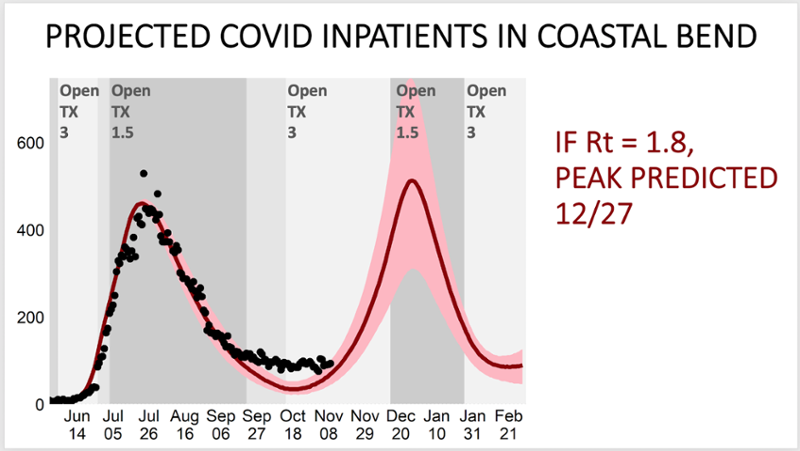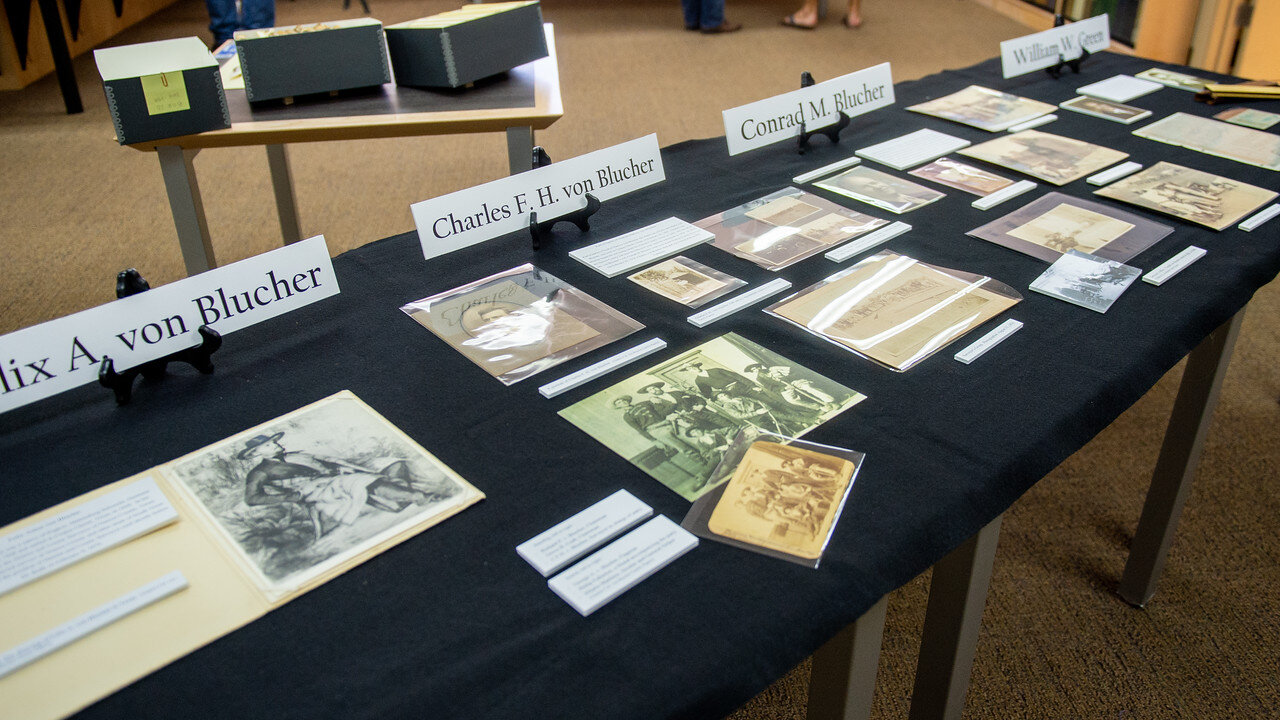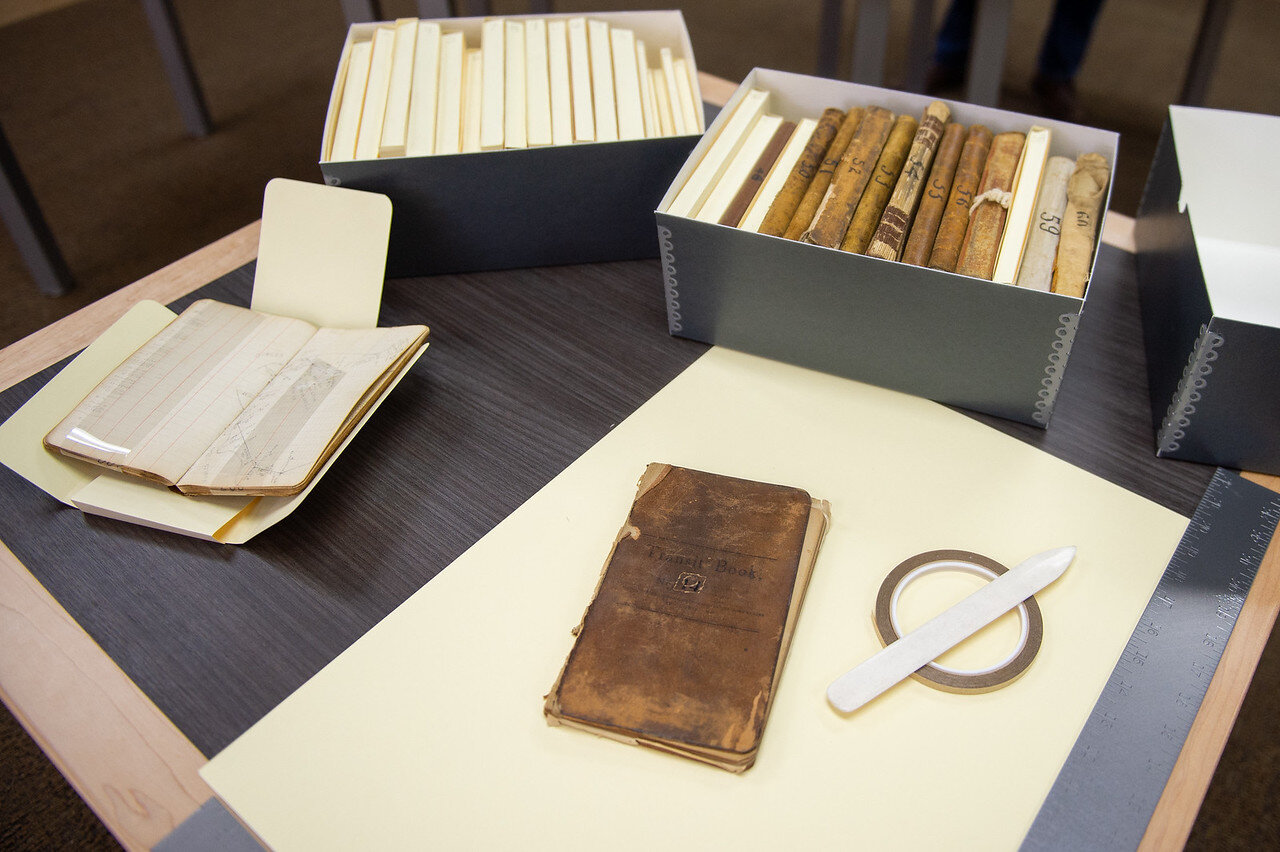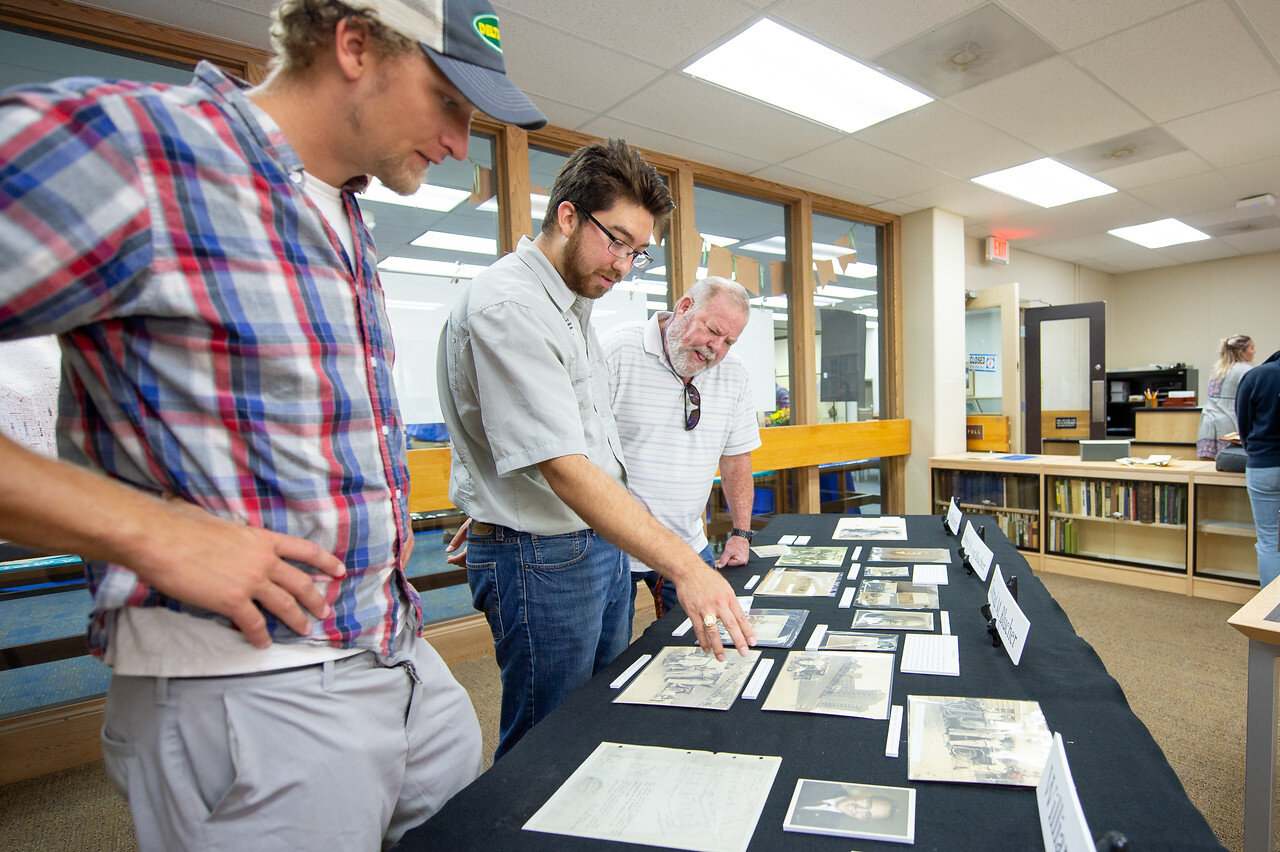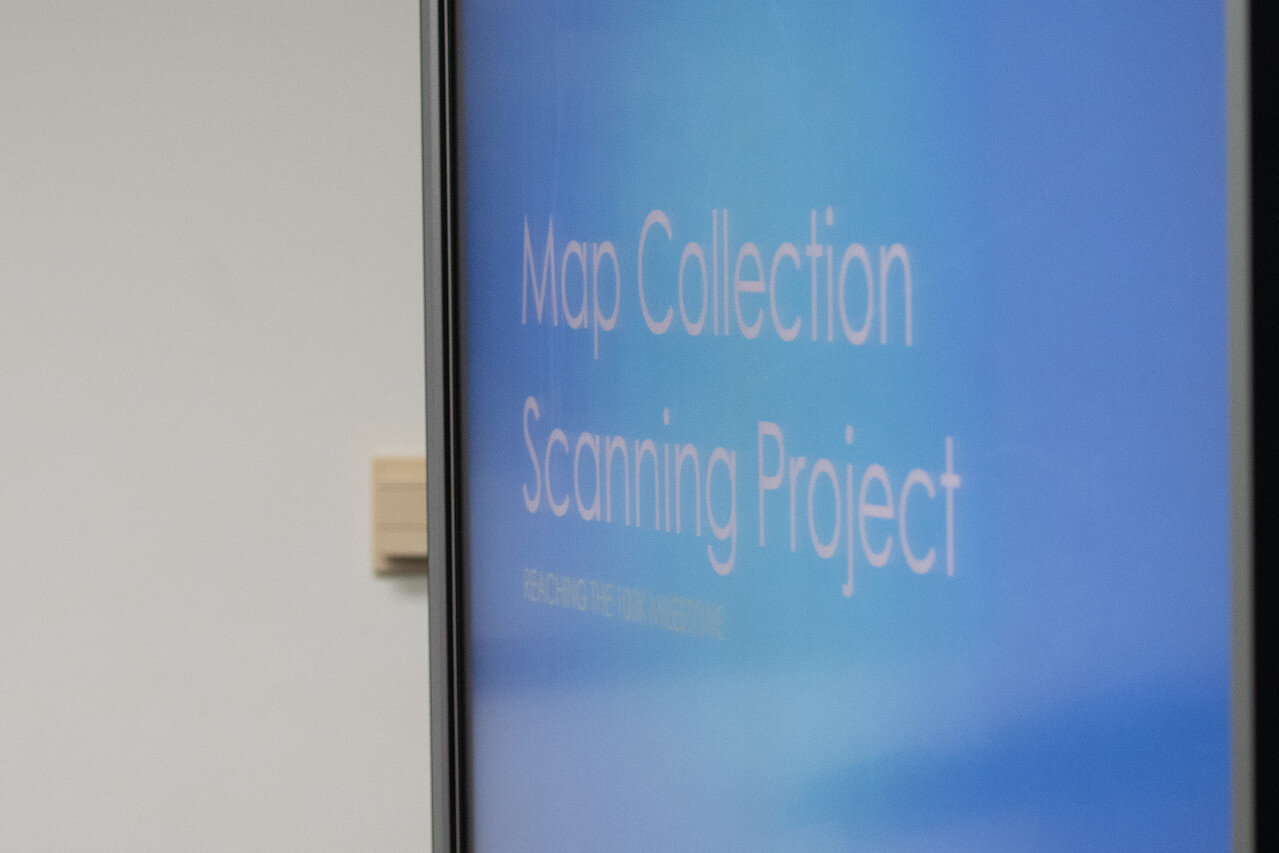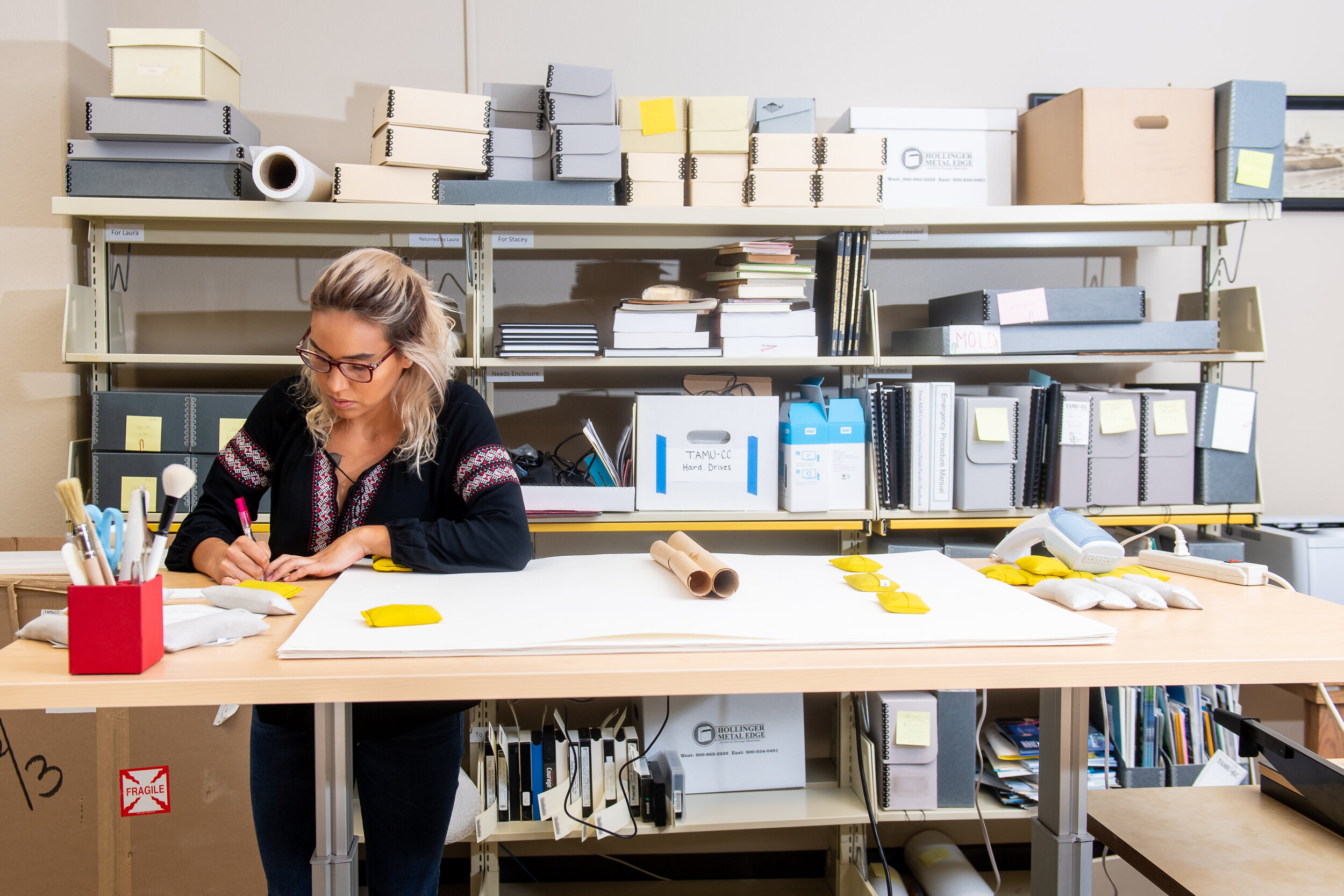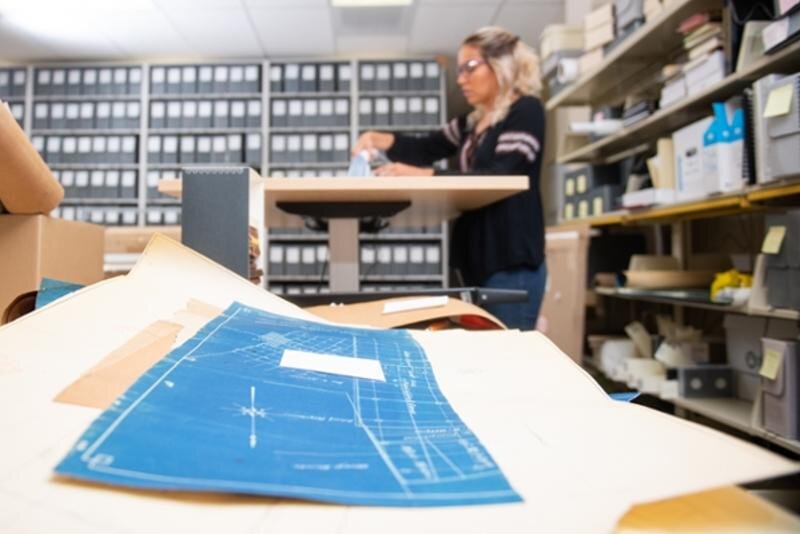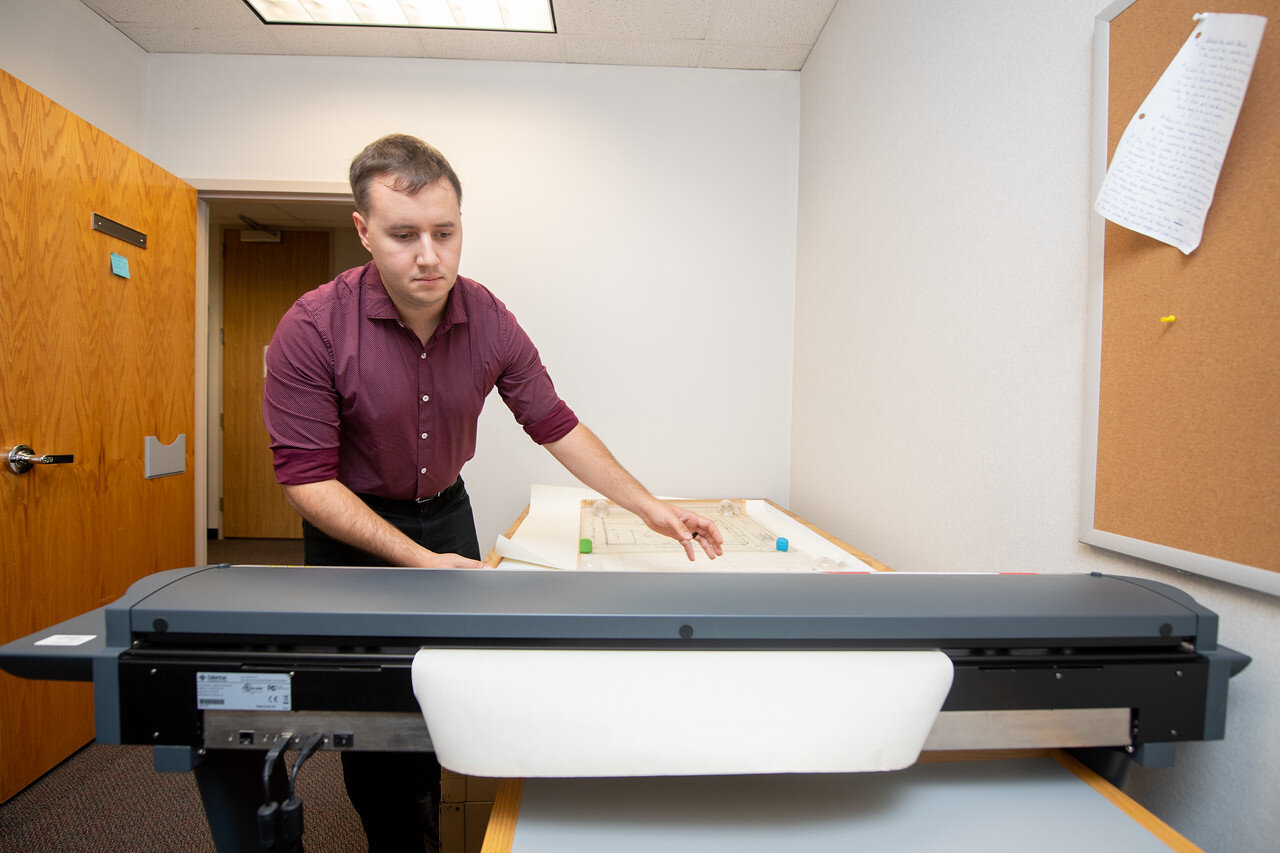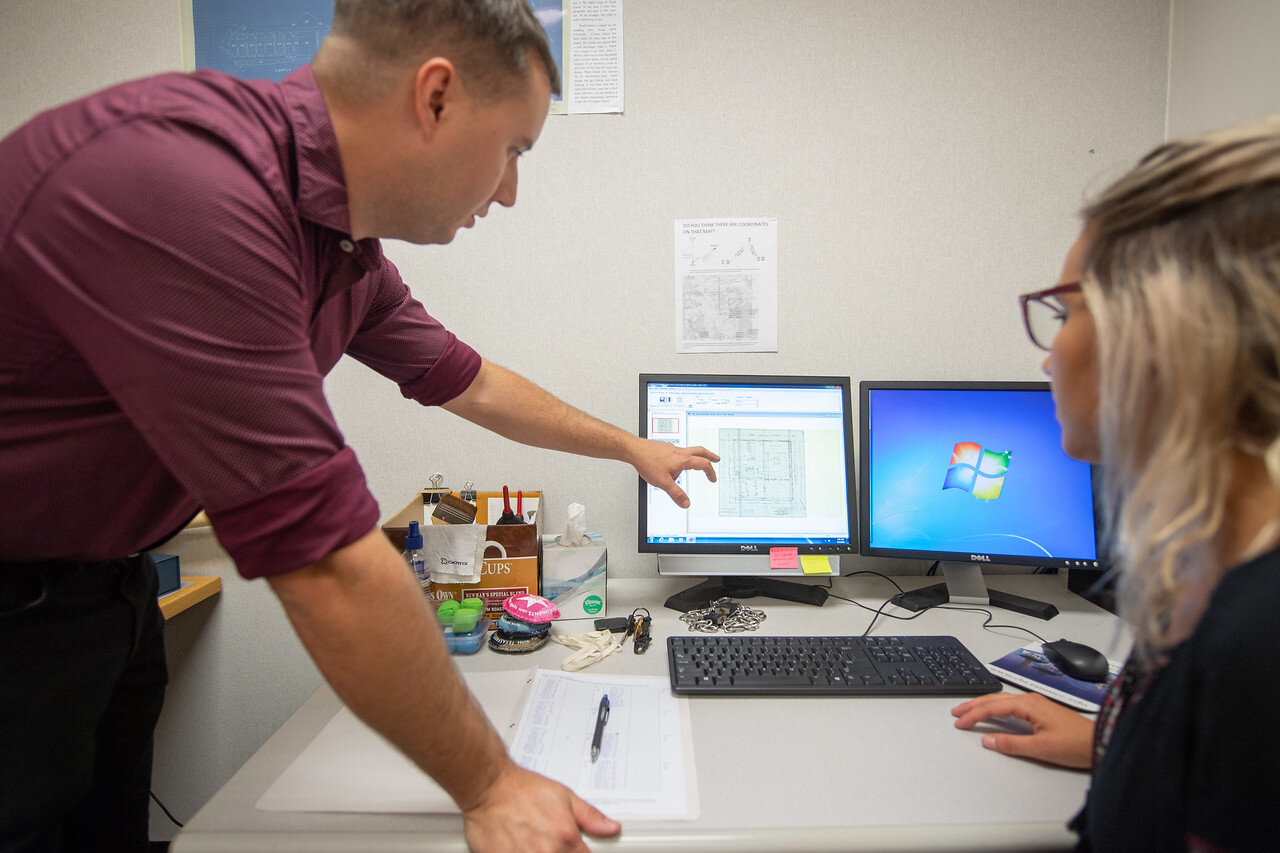Davey Edwards has been named President-Elect of the National Society of Professional Surveyors (NSPS).
CBI Student Awarded SRC Grant
GSCS PhD student, Abhishek Phadke, was awarded a Semiconductor Research Foundation (SRC) grant through Texas A&M Research and Innovation (TAMUCC R&I). Funds from his proposal titled “Resilient Operations of Unmanned Aerial System of Systems” will be used to purchase a set of microdrones to prototype the collaborative multi-UAV methods he will develop for his PhD research.
Hot Off the Press, New Article!
CBI researcher, Antonio Medrano, had an article published by PLOS.org today. The article discusses the impacts that data representations have and how they may or may not distort outcomes. The article focuses on two common spatial data preparations: 1) the connectivity of the network generated by connecting raster cells to their neighbors, and 2) the range of the attribute scale for assigning costs. Such analyses involve locating a linear feature by performing shortest path analysis on raster terrain data and are commonly used to locate transmission lines, where the results could have major implications on project cost and environmental impact.
Happy Global Surveyors Day, and Happy National Surveyors Week!
Tuesday, March 23, 2021
Happy Global Surveyors Day, and Happy National Surveyors Week!
What are you doing to celebrate?
We encourage you to register for NOAA’s NGS 2021 Geospatial Summit on Tuesday, May 4th and Wednesday, May 5th. This two day virtual event provides updated information about the planned modernization of the National Spatial Reference System (NSRS).
Link to register for the 2021 Geospatial Summit: https://geodesy.noaa.gov/geospatial-summit/registration.shtml
For more information on NOAA’s National Geodetic Survey 2021 Geospatial Summit: https://geodesy.noaa.gov/geospatial-summit/index.shtml
Surveying Activities For Kids:
https://www.nsps.us.com/page/BSmeritbadge
High School Trig-Star Competition:
CBI Students Recognized at National Conference
CBI students, Hamid Kamangir and Hue Dinh, were recognized for their presentations at the American Meteorological Society’s 20th Conference on Artificial Intelligence which was held vitually last month from January 10-15. Hamid Kamangir placed third and Hue Dinh placed fourth (honorable mention) at last month’s conference. Hamid Kamangir presented on his paper, FogNet: A Multiscale 3D CNN with an Attention Mechanism and a Dense Block for Fog Predictions, and Hue Dinh presented on his paper, Deep Learning Predictions of Coastal Fog Using Autoencoders.
The American Meteorological Society’s 20th Conference on Artificial Intelligence was held at the 101st Annual Meeting, from 10-14 January 2021 in New Orleans. The theme for the 101st Annual Meeting was “strengthening engagement with communities through our science and service”. The American Meteorological Society’s was founding in 1919 and its mission has been to advance the atmospheric and related sciences, technologies, applications, and services for the benefit of society.
Medical Society Joins TAMU-CC Researchers in Encouraging Changes that May Slow COVID-19 Increase
CORPUS CHRISTI, Texas – Data showing rapidly increasing COVID-19 infections at the approach of the holiday season has members of a special joint task force and the Nueces County Medical Society particularly concerned.
“The increase has started and we expect to see significant further increases,” said Dr. Chris Bird, Associate Professor of Biology at Texas A&M University-Corpus Christi. Already, cases this week have jumped to triple digits for the first time in more than 70 days.
The joint taskforce modelers have estimated the transmission rate has climbed to 1.8, meaning each person who becomes infected is likely to spread the disease to 1.8 others, almost doubling the numbers of infected people from one infected group to another.
During his weekly update to City of Corpus Christi and Nueces County leaders, Bird advised the community to prepare for a large outbreak and increased hospitalizations, peaking on Dec. 27 at about 500 new cases per day.
The Nueces County Medical Society is joining the task force in raising awareness of the danger. The medical society made several recommendations to the community to help curb the increase.
In a statement from Dr. Marita Rafael, president of the medical society, doctors pointed out that there is no evidence of “herd immunity” in the Coastal Bend. They noted that even small gatherings can spread the deadly virus.
“This holiday season, please cancel, postpone, or significantly alter your plans for gatherings,” they said. The medical society asked that people postpone gatherings until after a vaccine becomes available, hold gatherings outside, have separate tables for each household, and wear masks during such gatherings.
They asked that people stay socially distant at gatherings, refrain from hugs and kisses, serve each guest individually rather than buffet-style, or move the event to Zoom or another virtual platform.
Bird said steps people can take to lessen the risk include using face coverings and remaining socially distant, using take-out and curbside services whenever possible, and avoiding indoor gatherings.
“In agreement with the medical society, we are strongly encouraging the community to make these difficult but necessary changes in their plans, especially during the holidays,” said Dr. Philippe Tissot, Interim Director of the Conrad Blucher Institute at A&M-Corpus Christi. “The more steps we can take in these areas, the more we can do to protect ourselves and others, including our own family members and our friends. The vaccines are very promising and are coming, there is light at end of the tunnel, but we are very concerned about the next couple of months including here in the Coastal Bend.”
The task force is preparing in-depth reports and public presentations each week for the City of Corpus Christi and Nueces County that model the course of the virus across the Coastal Bend. The updates are presented at 5 p.m. Tuesdays.
The team’s presentations and findings can be seen on a special dashboard: https://www.conradblucherinstitute.org/covid19.
TAMU-CC researchers looking at beach and dune erosion caused by an active hurricane season
Author: Bill Churchwell
CORPUS CHRISTI, Texas — With Hurricane Zeta now projected to become the fifth named storm to make landfall on the Louisiana coast, thankfully, all we have seen are high tides and a higher threat for rip currents on our beaches. But there is also one other major impact here.
Deidre Williams is a researcher with Texas A&M Corpus Christi; they just conducted a survey from the Fish Pass on Mustang Island down to Bob Hall Pier to determine how much beach erosion we've had during this hurricane season.
“What we have had damage to is the beaches and dune system, and it has been significant. It's been some of the greatest damage I've seen over the years studying the area, and I started studying the area back in the 90's,” Williams said.
She said Hurricane Hanna caused major damage to the dune system along the coast and all the storms thereafter have made that damage even worse. That includes the narrowing of the beach along the North Padre Island seawall.
She said we've been lucky that we have an overall healthy dune system, but it is the most significant damage we've seen in a long time. She added that our bayside beaches, including those along Corpus Christi Bay, also took a hit.
"Such as Poenisch Park, University, Ropes and Cole Park, and folks are congregating in those beaches and the parks above them on the bluff, but the bluff was eroded severely along all of these parks, and the city will need to look for a plan to preserve those parks," said Williams
The final results of the survey have not yet been released. Williams said beach crews have been doing their best to help maintain our local beaches.
RELATED: WEATHER BLOG: Zeta headed for Eastern Louisiana as a Cat. 2 hurricane today
RELATED: Port Aransas Mayor issues disaster declaration, closes beaches to camping due to Hurricane Zeta
For the latest updates on coronavirus in the Coastal Bend, click here.
TAMU-CC Researchers Urge Caution to Avoid New COVID-19 Surge this Fall
By Darrell J. Pehr | Published: October 25, 2020
CORPUS CHRISTI, Texas – Researchers at Texas A&M University-Corpus Christi are urging everyone to remain vigilant and continue to wear face coverings, maintain social distance, and avoid large indoor gatherings as the number of COVID-19 cases rises across some parts of Texas.
“New cases remain low here, but are increasing significantly in Northwest Texas,” said Dr. Chris Bird, Associate Professor of Biology at Texas A&M-Corpus Christi. “As people gather more inside and the weather cools, face coverings and social distancing become increasingly important tools to combat a COVID-19 outbreak.”
Bird noted that the Coastal Bend is now seeing the lowest rate of new cases per capita compared to all other areas of Texas, a substantial improvement over past months. Hospitalizations in the Coastal Bend also have dropped as well as the number of people in intensive care units, however the decrease in hospitalizations has slowed and there are still more people in ICUs than before the initial outbreak in July.
One model the researchers follow shows that the transmission rate has slightly increased, which has researchers concerned, especially with the approach of holiday activities, such as Halloween and Dia de los Muertos.
“With a renewed commitment to taking simple precautions, we can make a big difference in how the Coastal Bend is impacted this fall and winter,” said Dr. Philippe Tissot, Interim Director of the Conrad Blucher Institute at A&M-Corpus Christi. “Much of what happens next is up to us. We don’t need to go through another outbreak.”
The researchers, part of a special COVID-19 task force, have projected what would happen if the transmission rate increases to 2.0, meaning each infected person spreads the disease to two other people. This scenario also assumes that the transmission rate changes back to 0.9 when 15% or more inpatients in Coastal Bend hospitals are COVID positive for at least seven days, as measures would be rolled back.
If a new surge starts, reacting quickly will considerably limit hospitalizations and casualties. The number of COVID-19 patients for this second scenario would increase over the next several weeks, reaching a peak in early November just below the peak in cases reached during the July surge. Total cases for the remainder of the year would be 12,387, significantly higher than if the transmission rate remains low.
Bird and the joint task force are analyzing the latest case data and have detected a bottoming of the downward trend around Oct. 10 and an increase since then. The task force will share its latest analyses – and whether this uptrend in cases is confirmed – at its weekly update to the Coastal Bend.
The task force is preparing in-depth reports and public presentations each week for the City of Corpus Christi and Nueces County that model the course of the virus across the Coastal Bend. The updates are presented at 5 p.m. Tuesdays.
The team’s presentations and findings can be seen on a special dashboard: https://www.conradblucherinstitute.org/covid19.
TAMU-CC Researchers Map Out How COVID-19 May Look in Future
CORPUS CHRISTI, Texas – With many Texas businesses now allowed to increase occupancy to 75% effective Sept. 21, researchers at Texas A&M University-Corpus Christi have prepared scenarios that show how the spread of COVID-19 could change over the coming weeks in the Coastal Bend.
The special COVID-19 research team generated two possible tracks for the disease, taking into consideration the relaxed occupancy limits for retail businesses, restaurants, gyms, offices, and others; the coming seasonal change in weather; and how well residents of the Coastal Bend will continue to adhere to social distancing, wearing masks, and other precautions. The scenarios are focused on the level of hospitalizations in area hospitals and follow the current transmission rate, as well as a possible increased rate.
“Basically, we’re having a small number of cases, our regulations have changed, and a lot of people want to know what might happen,” said Dr. Chris Bird, Associate Professor of Biology at Texas A&M-Corpus Christi. Bird presented the information during a regular weekly update Sept. 29 by city and county officials.
The first scenario, a continuation of the rate of transmission continuously used since mid-July, shows hospitalizations continuing to slowly decrease from a peak of cases in late July. Using a transmission rate of 0.9, meaning one infected person infects less than one other person, the model predicts a slow decline through the rest of the year when cases will be near zero. Total cases for the remainder of the year are projected at 421.
The second scenario shows what could happen if the transmission rate increases to 2.0, meaning each infected person spreads the disease to two other people. The second scenario also assumes that the transmission rate changes back to 0.9 when 15% or more inpatients in our Coastal Bend hospitals are COVID positive for at least seven days, as measures would be rolled back. If a new surge starts, reacting quickly will considerably limit hospitalizations and casualties. The number of COVID-19 patients for this second scenario would increase over the next several weeks, reaching a peak in early November just below the peak in cases reached during the July surge. Total cases for the remainder of the year would be 12,387.
The researchers emphasized that residents of the Coastal Bend can reduce or limit a new surge in cases depending on how well they follow precautions.
“It’s important for the community to know we could go through it again,” said Dr. Philippe Tissot, Interim Director of the Conrad Blucher Institute at A&M-Corpus Christi.
Bird agreed, noting that a continued commitment to taking precautions, such as wearing face masks, will be vital to maintaining the trend downward.
The researchers urge people to follow precautions carefully, such as social distancing, hand-washing, wearing face coverings, staying at home, and not gathering in groups in an effort to slow the spread of COVID-19.
Bird and other members of the task force are preparing in-depth reports and public presentations each week for the City of Corpus Christi and Nueces County that model the course of the virus across the Coastal Bend. The updates are presented at 5 p.m. Tuesdays, except for next week when the update will be presented at 5 p.m. Wednesday, Oct. 7.
The team’s presentations and findings can be seen on a special dashboard: https://www.conradblucherinstitute.org/covid19.
Bell Library Awarded $25K Grant to Digitize Blucher Family Papers
CORPUS CHRISTI, Texas – The Texas State Library & Archives Commission (TSLAC) recently awarded funding to The Special Collections and Archives Department at Mary and Jeff Bell Library at Texas A&M University-Corpus Christi under its Texas Reads grant program. Bell Library began work on a project to survey, process and create catalog records for the Charles F.H. von Blucher Family Papers on Sept. 1. Patrons will be able to access the papers via the internet upon completion of the project.
The award provides $25,000 to hire a part-time graduate assistant (GA) who will work 17 hours a week between Sept. 1, 2020 and Aug. 31, 2021 on the Family Papers project, which consists of 149 linear feet of paperwork. The collection represents the history and contributions of three generations of a prominent German-American family from 1840 to 1940, according to Lori Atkins, the principal investigator who wrote the grant with Processing Archivist Eric Christensen and Library Specialist II Phebe Leach.
“The Blucher Collection is divided into two parts: the maps in the Conrad Blucher Surveying Collection (CBSC) and the family’s historical papers in the Charles F.H. von Blucher Family Papers (Family Papers),” Atkins said. “Baron Anton Felix Hans von Blücher was a German immigrant who came to Corpus Christi tin the 1840s; he served as Nueces County’s first elected surveyor. His son Charles F.H. von Blucher and grandson Conrad M. Blucher followed him in this position.”
Work on the Family Papers project will be divided into three phases.
Phase I: The GA will survey the existing collection to gauge the current state and preservation issues of the collection.
Phase II: The GA will prepare a processing plan that outlines the proposed hierarchy of the collection, preservation activities and the level cataloging needed.
Phase III: The GA will process the papers and create cataloging records for the collection and write a Finding Aid, or guide that describes the contents of a collection, that will be loaded onto three portals.
The Family Papers include a broad range of items, including historic photographs dating to 1860, family trees and genealogy of the Blucher family, personal and business correspondence, diaries, financial, legal documents, and personal drawings, Atkins said.
“The letters of Maria von Blucher are included in these files. She was a young German bride in 1849 who came with Felix von Blucher to Corpus Christi Bay to establish their home in the new frontier town. For thirty years, she wrote letters home describing her life, the living conditions, droughts, Indian and bandit raids, the American Civil War, and the development of Corpus Christi,” Atkins said. “These letters open a window into a time gone by and the building of a city.”
Atkins said while the von Blucher Family Papers are available to the public today, researchers must visit the Special Collections Reading Room at Bell Library to read them. The goal of the project is to digitize and upload all photographs, slides, and Maria von Blucher’s letters to the library’s repository website to make the papers available to all via the internet. The full scope of the project will take two years, she said, and the team plans to reapply for the grant next fiscal year.
In a previous project, Conrad Blucher Institute (CBI) digitized 9,123 CBSC maps, 4,267 field books and 1,481 map page indices, which available on Bell Library’s repository. The current project will add the Family Papers to the repository.
“Special Collections and Archives preserves and shares huge collections of primary and secondary historical materials pertaining to South Texas and particularly Corpus Christi with our students, faculty, and the community – these are unique items not found anywhere else,” Atkins said. “To make them digitally available involves labor intensive, hands-on work by a team of archivists and workers. By creating an online inventory, digitizing photographs, correspondence, maps and surveying documents and making them available online, they are more widely accessible to all.”
This project is just one of 44 made possible this year by a grant from the U.S. Institute of Museum and Library Services to the Texas State Library and Archives Commission under the provisions of the Library Services and Technology Act.
“Communities in every corner of Texas will benefit from the resources that have been made available through this list of forward-thinking grant proposals,” said TSLAC Director and Librarian Mark Smith.
TSLAC awards competitive grants annually, as funding allows. For the 2020 fiscal year, which runs from Sept. 1, 2019, to Aug. 31, 2020, TSLAC has awarded approximately $1.23 million in competitive grants. The TexTreasures Grant will provide assistance and encouragement to 12 libraries to provide access to their special or unique collections and to make information about those collections available to library users across the state, including Bell Library’s project to survey, process, and create catalog records for the von Blucher Family Papers.
Q: What is the history of the von Blucher Family Papers at Bell Library?
A: The Charles F.H. von Blucher Family Papers were generously donated to Texas A&M University-Corpus Christi by the descendants of Charles von Blucher, son of Felix Anton von Blucher (1819-1879) and Maria Augusta Imme von Blucher (1827-1893), a pioneer German couple to Corpus Christi in the late 1840s. Foremost among these donors were Conrad Blucher and his wife Zula Blucher, George A. Blucher, Jr. and his wife Medora Blucher, Claudia Blucher Harrell, and Mary Julia Blucher Jordan.
The Blucher materials began to be transferred to Special Collections & Archives of Texas A&M University-Corpus Christi in the early 1980s. Included in these initial acquisitions were business papers as well as some of the most important, beautifully hand-drawn surveying maps of South Texas by Felix Blucher and Charles Blucher, leading surveyors of the region. Of great significance to the study of surveying and coastal studies by the university, the transfer to campus of the remaining massive Conrad Blucher Surveying Collection (CBSC), part of the Blucher Papers, was completed in 1994.
Simultaneously, the personal and remaining business papers of the Blucher family were largely transferred to Special Collections during the 1990s but culminated in 2012 with the final significant addition. Complementing the CBSC, these items comprise one of the most important sources in Texas for studying the acculturation and contributions of German-Americans and span from the 1840s-1950s.
Drawing from the personal papers, the award-winning book of correspondence entitled “Maria von Blucher’s Corpus Christi: Letters from the South Texas Frontier, 1849-1879” edited by Bruce S. Cheeseman was published in 2002. Other publications have emanated from the Blucher Papers as well. Many more works will doubtless be produced as access to the collection expands and scholars increasingly focus their attention to the vast range of ethnic diversity in South Texas.
- Dr. Tom Kreneck, Past Director of Special Collections and Archives at Bell Library









